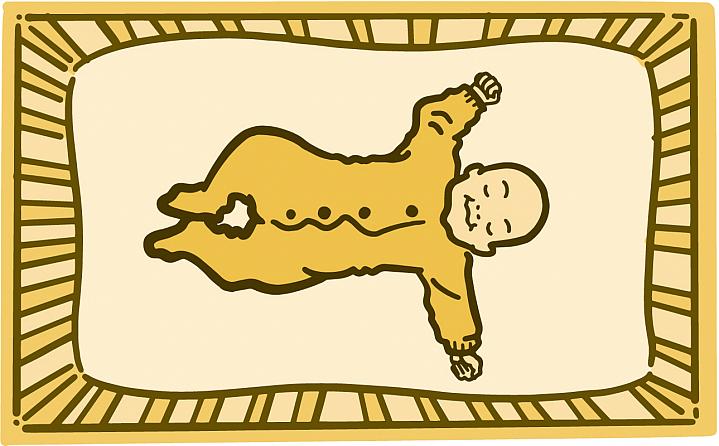Safe Sleep for Baby
Reducing the Risk of SIDS

Did you know that babies should sleep on their back rather than their belly? Research has revealed many risk factors for sudden infant death, and sleep position is the most important one.
Each year in the U.S., about 3,500 infants die suddenly and unexpectedly in their sleep. In about half of these deaths, doctors can’t find a medical reason to explain why, even after a complete review. When the doctor doesn’t have answers, the death is called sudden infant death syndrome (SIDS).
“All babies are at risk, especially those under 1 year of age,” explains Dr. Marion W. Koso-Thomas, a child health expert at NIH. Babies are most vulnerable to SIDS up to 4 months old.
“One of the critical pieces to SIDS risk reduction is how the baby sleeps,” she says. “Babies who are sleeping should be on their back.”
Limit a baby’s belly time to when they’re awake. A baby shouldn’t sleep on their belly or side.
Why does sleep position matter? Sleeping on the belly lowers an infant’s blood pressure and reduces their ability to get oxygen to the brain. Between 2 and 4 months old, especially, the reflex to breathe to get more oxygen is repressed when an infant sleeps on their belly.
Researchers also suspect that a brain condition may be a cause of SIDS. They have been studying the part of the brain that controls breathing and heart rate during sleep. They think these babies may not have the reflex to awaken when breathing becomes impaired.
“More research needs to be done to understand what’s going on in those babies and hopefully identify a screening tool to help save their life,” Koso-Thomas says.
What causes SIDS may not be known, but several things raise the risk. In addition to sleep position, research shows that soft bedding above or below your infant is a danger.
“There is no need to have a blanket,” Koso-Thomas says. Instead, dress your baby in sleep clothing, such as a onesie, that’s designed to keep them warm. This keeps them safer.
Make sure they’re dressed appropriately for the environment. But don’t overbundle. Check for signs that they’re too hot, like sweating or if their chest is hot to the touch.
It’s important to prevent your baby’s nose and mouth from becoming covered. “The area around them should not have any clutter—no toys, no bumpers,” Koso-Thomas emphasizes.
Experts also advise that you keep your baby in the same room, but not in your bed with you. When you’re done feeding, place your baby in their safe area, such as a cradle next to your bed.
“The safe sleep environment is the biggest factor that’s going to reduce or eliminate the SIDS risk for a baby that’s less than a year old,” Koso-Thomas says. See the Wise Choices box to learn other tips for providing a safe sleep environment.
NIH Office of Communications and Public Liaison
Building 31, Room 5B52
Bethesda, MD 20892-2094
nihnewsinhealth@od.nih.gov
Tel: 301-451-8224
Editor: Harrison Wein, Ph.D.
Managing Editor: Tianna Hicklin, Ph.D.
Illustrator: Alan Defibaugh
Attention Editors: Reprint our articles and illustrations in your own publication. Our material is not copyrighted. Please acknowledge NIH News in Health as the source and send us a copy.
For more consumer health news and information, visit health.nih.gov.
For wellness toolkits, visit www.nih.gov/wellnesstoolkits.



